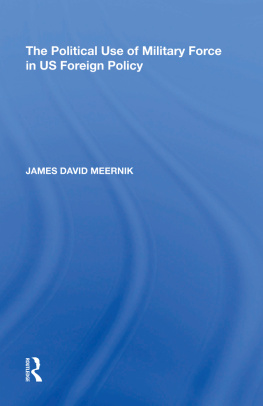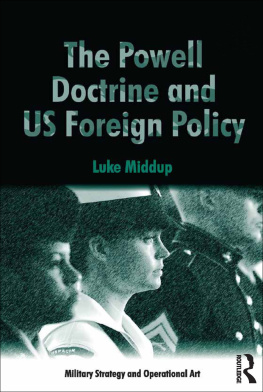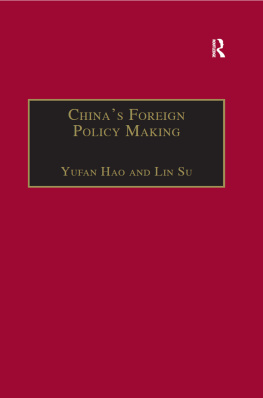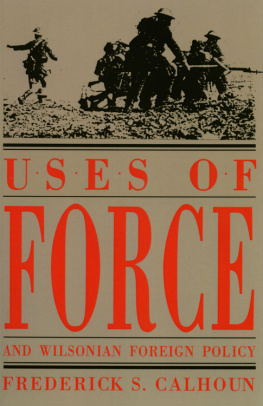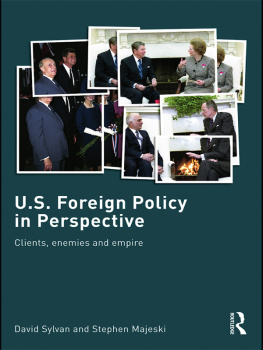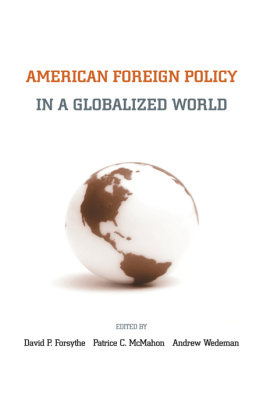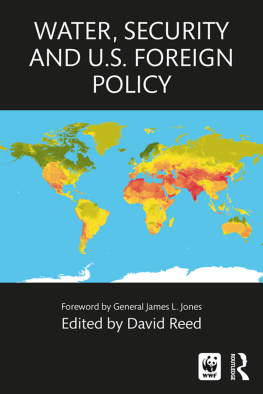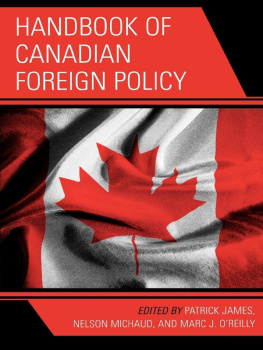This book is dedicated to Kimi King with whom all things are possible.
First published 2004 by Ashgate Publishing
Reissued 2018 by Routledge
2 Park Square, Milton Park, Abingdon, Oxon OX14 4RN
711 Third Avenue, New York, NY 10017, USA
Routledge is an imprint of the Taylor & Francis Group, an informa business
James David Meernik 2004
James David Meernik has asserted his right under the Copyright, Designs and Patents Act, 1988, to be identified as the author of this work.
All rights reserved. No part of this book may be reprinted or reproduced or utilised in any form or by any electronic, mechanical, or other means, now known or hereafter invented, including photocopying and recording, or in any information storage or retrieval system, without permission in writing from the publishers.
A Library of Congress record exists under LC control number: 2004007712
Notice:
Product or corporate names may be trademarks or registered trademarks, and are used only for identification and explanation without intent to infringe.
Publisher's Note
The publisher has gone to great lengths to ensure the quality of this reprint but points out that some imperfections in the original copies may be apparent.
Disclaimer
The publisher has made every effort to trace copyright holders and welcomes correspondence from those they have been unable to contact.
ISBN 13: 978-0-815-39808-0 (hbk)
ISBN 13: 978-1-351-14572-5 (ebk)
Chapter 1
Introduction
Operation Vigilant Warrior
On October 7, 1994, Saddam Hussein ordered a substantial deployment of his military forces to Iraq's border with Kuwait. The US had only three years prior decisively defeated Iraq in the Persian Gulf War, but Saddam Hussein remained in power with a significant military capability still intact. Now he was threatening Kuwait and its oil fields again and testing the resolve of the US. How would the US respond to this threat to the nation of Kuwait and to the stability of the Middle East? Would President Clinton use the US' military might to deter Iraq from threatening its neighbors? That is the question that lies at the heart of this book and it is one that is important not just to international relations and foreign policy scholars, but the American public and indeed, the world at large. When does the US use military force to influence other governments, and for what reasons? There is no shortage of reasons why President Clinton might have used the US military to deal with Saddam Hussein and Iraq's threat to Kuwait. In fact, there are four principal explanations for the use of military force short of war that are the subject of this book and that might explain this particular case: 1) security and power interests, 2) economic interests and objectives, 3) the promotion of democracy and human rights, and 4) domestic, political interests. Which one explains why President Clinton did use force to respond to the Iraqi government's actions? More importantly, why do all presidents use force to achieve the aims of US foreign policy?
First, in the Iraqi case, decision makers in the US government perceived a great many issues and interests at stake in this crisis that could affect the stability of the Middle East and US national security. The US had staked a great deal of its credibility on containing Saddam in the Middle East and preventing him from threatening his neighbors. US forces patrolled the Persian Gulf, the skies over southern and northern Iraq and were stationed throughout the region. If the US was not prepared to utilize its advantages at this time to meet this challenge, countries around the world might well question America's willingness to live up to its other commitments. A move by Iraq to recapture Kuwait, or to attack Saudi Arabia would have upset the balance of power in the region and allowed Iraq to assume a much more prominent role in Middle East politics. This in turn would have jeopardized moderate Arab regimes with whom the US was on good terms, such as Egypt and Jordan. Thus, Saddam Hussein's latest Kuwaiti gambit engaged vital, national interests for the US.
Of course, Persian Gulf oil was never far from any discussion of what Saddam's move might mean to the US. The US, its European allies and Japan imported tremendous quantities of oil from and through the Gulf region. US oil prices had increased dramatically in the summer of 1990 when Saddam invaded Kuwait. Certainly, if Iraq could seize Kuwait and intimidate Saudi Arabia, Saddam Hussein would have incredible leverage over world oil prices. No one needed to emphasize the consequences of such a development for the US and global economy to President Clinton.
One can also find a justification for the US deployment in the desire to promote democracy and human rights. During and immediately after the Persian Gulf War, the US government sought the overthrow of Saddam Hussein and his replacement by a more legitimate and representative government. It encouraged separatist movements in northern and southern Iraq, funded various opposition movements inside and outside of Iraq, and used the Central Intelligence Agency to foment resistance within the Iraqi regime. If it did not expect that a Western style democracy was anywhere in the offing, President Clinton certainly spent substantial time and money trying to overthrow and ultimately liberalize the Iraqi government. The US had acquired a vested interest in Iraqi politics and any opportunity that presented itself to destabilize Saddam Hussein's brutal regime could be exploited to ultimately create a friendlier, less repressive government.
And if Saddam Hussem was not creating enough headaches for President Clinton, his administration was experiencing a number of problems at home that might make a foreign adventure just the right antidote. Clinton was in the process of losing the battle over revamping the nation's health care system, the corner piece of his domestic agenda. Other legislative initiatives were also stalled in a gridlocked Congress. President Clinton's support among the public, which had never been that great, had declined in the weeks prior to the Iraqi moves to only 42 percent. Congressional elections, in which Republicans were forecast to do very well (they eventually took over both chambers for the first time since 1953), were just a few weeks away. A timely display of American power and executive leadership might have been just what Clinton needed at the time to demonstrate strong leadership and rally the public behind him.
So why did President Clinton dispatch 170 planes and 6500 personnel to the Persian Gulf?definition of these uses of military force. For while many Americans are acquainted with the very few, but very significant wars the nation has been involved in, we tend to be less familiar with the many uses of force short of war.
Defining the Political Use of Military Force
The subject of this book is the political use of military force, short of war, in US foreign policy. It is a study of the use of force as a diplomatic weapon. The events I explore are those military operations that have been designed to influence change in and among foreign countries. Political uses of force short of war involve attempts to persuade other nations and their leaders to do or not do things US foreign policy makers desire. The US has used its military in actions short of war hundreds of times since the founding of the Republic to accomplish all manner of foreign policy aims. They are among the most frequent, significant and far-reaching tools in US foreign policy. From actions in the Caribbean during the Quasi War in the late 18th century, the deployment of the naval armada under Commodore Perry to open up Japan, the use of naval force to help stop the slave trade, and the more extensive gunboat diplomacy in the Caribbean in the first part of this century, instances of the use of military force short of war have been replete in the pre modern era. Since World War II the US has embarked on hundreds of military missions abroad, including a number of prominent incidents like the naval quarantine around Cuba during the 1962 missile crisis, the world wide nuclear alert during the 1973 Middle East War, the 1983 invasion of Grenada, the 1986 bombing of Libya, the invasions of Panama (1989), Haiti (1994) and the deployment in Bosnia in 1995. These operations involve high-level crisis politics and struggles over some of the most salient issues of the day. American lives have been lost and much treasure has been expended. The course of politics within the US and around the world has been altered by these events.


